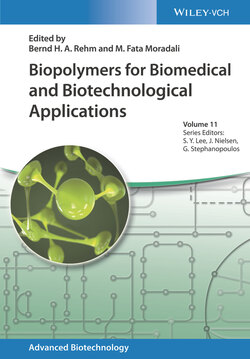Читать книгу Biopolymers for Biomedical and Biotechnological Applications - Группа авторов - Страница 51
2.7.3.1 Biomedical Applications
ОглавлениеChitin, chitosan, and chitinous polysaccharides have been subject of increasing interest on the biomedical field due to their biocompatibility, biodegradability, and nontoxicity [237]. Moreover, these polysaccharides also have biological activity including anticancer and antibacterial activity [234]. They are also immunostimulating, antithrombogenic, hemostatic, and wound healing [234,235]. These properties make these biopolymers interesting materials for drug delivery systems, tissue engineering, or wound healing products.
Chitin and chitosan can be used as drug/vitamin carriers and excipients in films, hydrogels, or powders for drug delivery systems or ophthalmologic formulations [228,234]. For example, chitosan hydrogels were already used as support for the controlled release of betahistine (a histidine analog) [215] (Table 2.4). Chitosan can also be used in contact lenses for eyes due to its optical clarity, mechanical stability, and wettability [235].
Chitin‐based materials are promising materials for tissue engineering of nerves, blood vessels, or scaffolds for regenerative medicine. These structures have high porosity and structural integrity that promote cell adhesion and encourage cell function as important features for regenerative materials [228,235]. These polysaccharides also contribute to the activation of immune system, which was already demonstrated in some in vitro and in vivo trials [249].
Chitinous polysaccharides are also commonly used as wound healing fibers [229] (Table 2.4). Some chitin and chitosan products are already commercially available, for example, in form of sponges, nonwoven dressings for burns or skin abrasions, and several other injuries, as well as gels for internal wounds [228].
